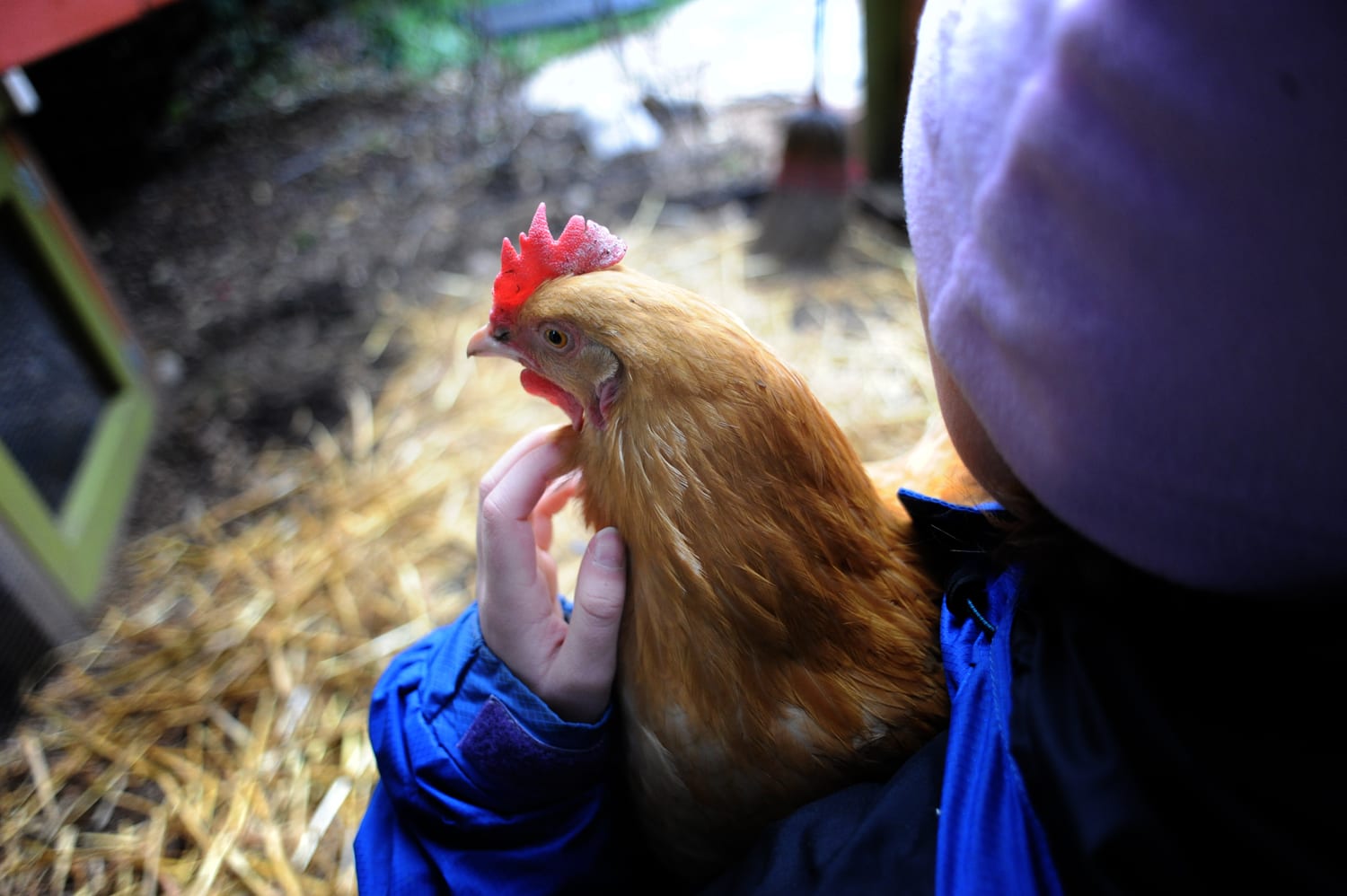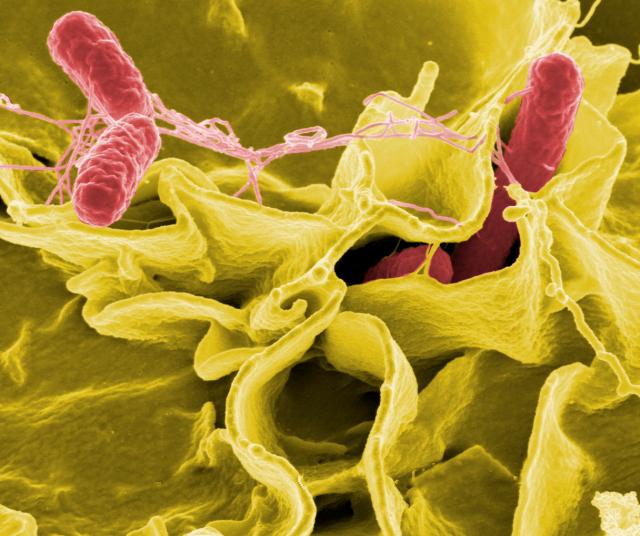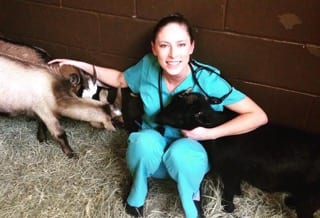Just when you thought the biggest philosophical debate about poultry was whether the chicken or the egg came first, a new urban and suburban trend of raising backyard chickens has exploded in popularity over the past few years. After all, who doesn't want an animal that makes your breakfast?
However, the rise in popularity of backyard chicken farming also brings a rise in health risks to both humans and animals alike, particularly from illnesses caused by the mighty microbe Salmonella. Over the past five years, there has been an increase in multi-state outbreaks of Salmonella infection linked to live poultry in backyard flocks. But “the 2016 Salmonella outbreaks really stand out. They were the largest number of outbreaks and the largest number of illnesses that we've seen linked to live poultry,†says Dr. Megin Nichols, DVM, MPH, a veterinarian at the Centers for Disease Control and Prevention (CDC). In 2016, the CDC investigated eight outbreaks that infected 895 people across 48 states.

By now you are probably thinking “what's so bad about Salmonella?†Salmonella is a type of bacteria that lives in the gastrointestinal tract of many animals, including wildlife, farm animals, and pets. While it resides in poultry naturally, new types of Salmonella can be introduced into birds from other animal reservoirs. The transmission of Salmonella to a susceptible individual is often thought of as eating contaminated food. Remember your mom always told you not to lick all the raw cake batter off those beaters? Well that's because foods like raw eggs and flour are at high risk for carrying Salmonella.
However, the same risks are true for handling live chickens that naturally carry Salmonella and often shed it in their poop. It can easily contaminate their feathers, feet, beaks, and other body parts. “74% of ill people who were interviewed during the eight outbreaks had contact with live poultry the week before getting sickâ€. Illness from Salmonella often causes symptoms like diarrhea, fever, and abdominal cramps. In some cases, the diarrhea may be so severe or additional complications may develop, resulting in a trip to the hospital. The best thing you and your loved ones can do to avoid this unpleasant experience is cheap and simple.
After you touch a bird, or anything in the area where they live and roam, wash your hands! It's also a good idea to have dedicated shoes and clothing for handling your fur babies to reduce the spread of Salmonella.

And, it's not just the backyard chickens themselves that can give you Salmonella. You've got to watch out for their eggs too! People often tell me they want to raise their own chickens because the eggs are safer to eat and the birds are healthier than those produced commercially. Unfortunately, a recent study found that Salmonella contamination of eggs produced by small layer flocks (<3,000 chickens) is higher than those produced by larger flocks (3000 to 50,000 chickens). The flock size poses an important distinction, as flocks with more than 3000 birds must comply with the FDA Final Egg Rule, whereas small flocks are exempt from the rule.
In addition, antibiotic use in chickens has become a controversial topic and perhaps a driving factor for the rise in backyard poultry farming. The CDC tests “three random samples from every Salmonella outbreak linked to backyard poultry to see if they are susceptible to a variety of antibiotics, and occasionally [they] do see antimicrobial resistance in these samplesâ€. This means that enough resistance has built up in the Salmonella that treating sick animals or humans with that antibiotic won't be effective. It is important to note that no information is collected about the antibiotic use in these backyard chickens. Regardless, antimicrobial resistance is recognized as a growing global threat, and the identification of drug resistant Salmonella among backyard flocks shows the zoonotic risks associated with farm-to-table practices.
So what does this mean for all of you converts to the backyard chicken movement? Well, it might be time to take a closer look at your hygiene practices. Although Easter time is just around the corner, think twice before you give those chicks a snuggle or a smooch. The good news is that veterinarians are trained on how to treat all creatures great and small, so consult with your local veterinarian to learn about the best ways to raise them. The CDC also has some great tips for protecting yourself and others, while enjoying backyard poultry.
Featured Image Credit: Willowcottagegarden.wordpress.com/ via flikr
 Lydia Anderson is a Dual DVM-PhD graduate student at the University of Georgia. Since completing her PhD in Infectious Diseases, she has been working on her DVM at the College of Veterinary Medicine with an emphasis in public health and translational medicine. She plans to use her training to help address the questions and challenges facing One Health due to emerging and zoonotic infectious diseases. When she is not busy learning how to save all things furry and playing with test tubes, Lydia can be found either freestyle cooking for her friends and family or binge watching Netflix with her rescue pup, Luna. More from Lydia Anderson.
Lydia Anderson is a Dual DVM-PhD graduate student at the University of Georgia. Since completing her PhD in Infectious Diseases, she has been working on her DVM at the College of Veterinary Medicine with an emphasis in public health and translational medicine. She plans to use her training to help address the questions and challenges facing One Health due to emerging and zoonotic infectious diseases. When she is not busy learning how to save all things furry and playing with test tubes, Lydia can be found either freestyle cooking for her friends and family or binge watching Netflix with her rescue pup, Luna. More from Lydia Anderson.
About the Author
-
athenssciencecafehttps://athensscienceobserver.com/author/athenssciencecafe/April 17, 2020
-
athenssciencecafehttps://athensscienceobserver.com/author/athenssciencecafe/April 12, 2020
-
athenssciencecafehttps://athensscienceobserver.com/author/athenssciencecafe/April 3, 2020
-
athenssciencecafehttps://athensscienceobserver.com/author/athenssciencecafe/March 30, 2020







